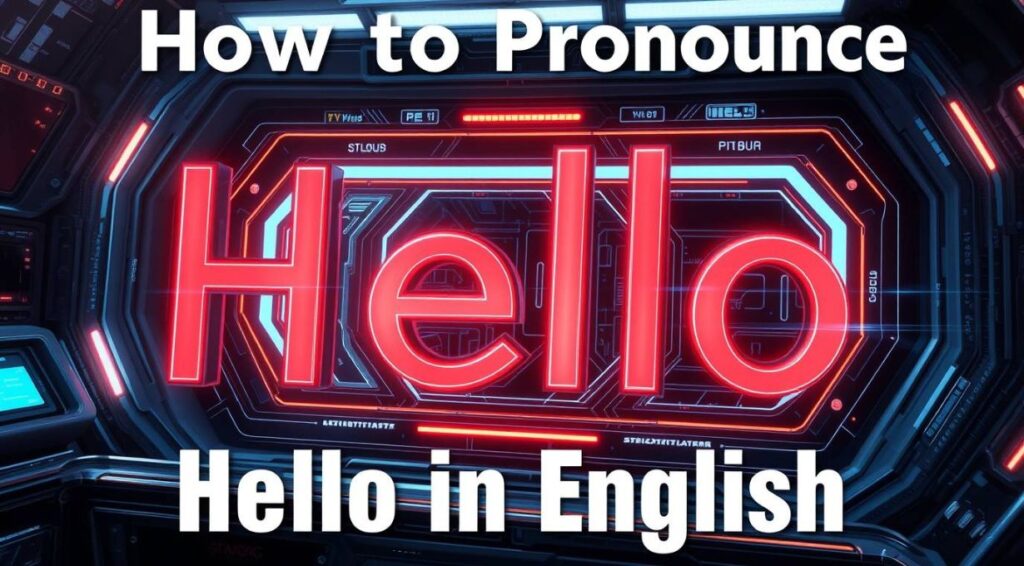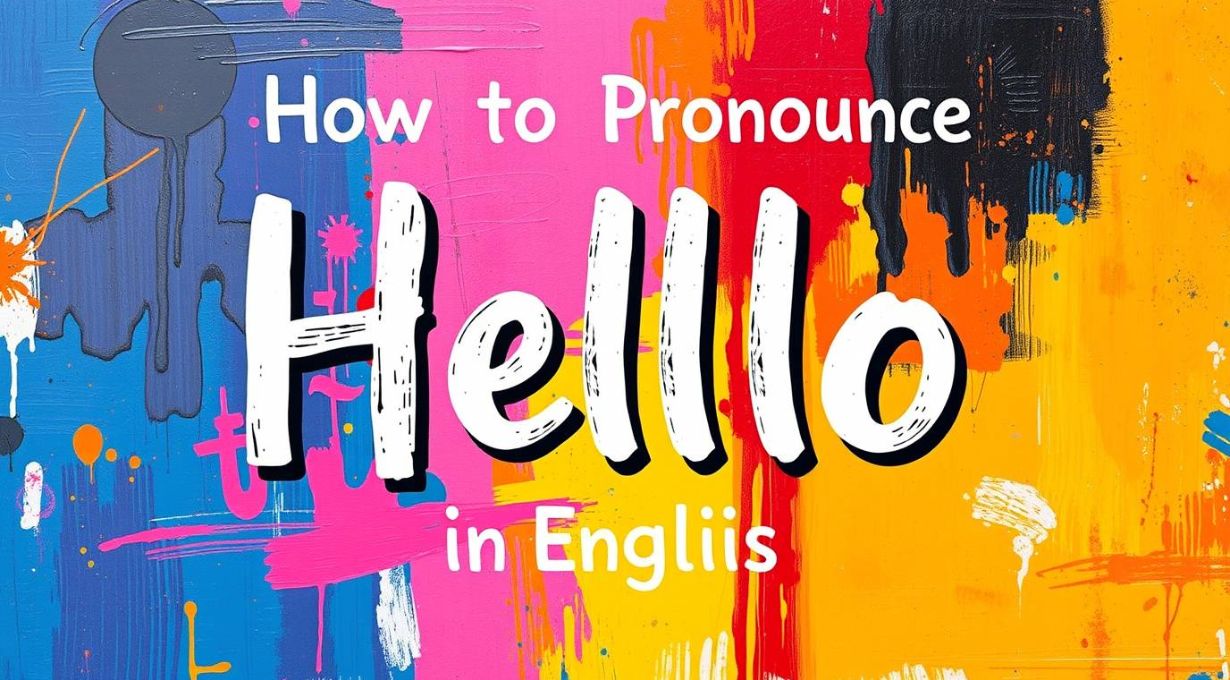Hello! Whether you’re new to English or just refining your skills, learning how to pronounce “hello” correctly can be a small but important part of mastering the language.
In this article, we’ll explore how to pronounce “hello” in different situations, the subtleties of the sound, and the variations that might arise depending on the accent or context. The goal is to give you a clear, approachable guide to saying “hello” just right, whether you’re meeting someone for the first time, making a phone call, or joining a virtual meeting.
Let’s dive in and explore everything you need to know about pronouncing “hello” in English!
The Basics of Pronouncing “Hello”
The word “hello” is widely used in English-speaking countries around the world, and while it seems simple, the way you pronounce it can vary depending on the accent or region. The standard pronunciation is quite straightforward, but different nuances can help convey different meanings or emotions. Let’s break down the key sounds to help you get started.

1. Phonetic Breakdown
In the International Phonetic Alphabet (IPA), “hello” is represented as /həˈləʊ/ (in British English) or /həˈloʊ/ (in American English). Here’s a step-by-step breakdown:
- /h/: The “h” sound is a voiceless glottal fricative. You make it by exhaling air through your open vocal cords, like the “h” in “hat.”
- /ə/: This is the schwa sound, represented by the letter “e” in an unstressed syllable. It’s a quick, neutral vowel sound, like the “a” in “sofa.”
- /l/: The “l” sound is a voiced lateral liquid, meaning the sound is made by letting air flow around your tongue, which touches the roof of your mouth.
- /əʊ/ or /oʊ/: The final vowel sound varies depending on your accent. In British English, it’s more like the diphthong /əʊ/ (a combination of the “uh” sound and the “o” sound), and in American English, it’s /oʊ/ (like the “o” in “go”).
2. General Guidelines
- Syllables: “Hello” has two syllables—“he” and “llo.” The stress typically falls on the second syllable, so it’s pronounced as he-LLO.
- Tone: The way you say “hello” can change depending on your tone. You can say it in a friendly, casual way or more formally, depending on the situation.
- Speed: It’s common to pronounce it more quickly in casual contexts, like greeting friends, and more slowly or carefully in formal settings.
3. Common Pronunciation Variations
Different accents can alter the pronunciation of “hello,” which means that it might sound a little different depending on where you are in the world. Here are some variations to be aware of:
a. British English
In British English, you might hear “hello” pronounced with a more pronounced diphthong in the final syllable. It sounds like “heh-LOH.” Some regional accents may shorten the diphthong, making it sound more like “heh-LO.”
b. American English
In American English, the final “o” tends to sound like the long “o,” as in “go,” making it sound like “heh-LOH.” However, the unstressed “e” can sometimes sound a bit more pronounced in casual speech.
c. Australian English
In Australian English, “hello” is often shortened or merged with the surrounding speech, making it sound more like “heh-LOH” but with a very distinctive, laid-back intonation. Aussies tend to speak quickly and may drop sounds in casual conversation.
d. Other Accents
Across English-speaking countries, there are many variations. For instance, in parts of Canada, you may hear a slightly different vowel sound, while in South Africa, you might hear a more distinct, crisp enunciation.
Different Contexts for Saying “Hello”
Now that we’ve covered the basic pronunciation, it’s important to understand how the way you say “hello” can change based on context. Your tone, speed, and style of saying it can vary greatly, and that’s totally okay! Let’s explore some of these variations.
1. Casual Greetings Among Friends
When you’re greeting a friend or someone you know well, your “hello” will likely be relaxed and informal. You might say it quickly, almost as if it’s a single sound: “hey” or “hi.” In this case, the emphasis is on the friendly connection rather than the exact pronunciation.
Examples:
- “Hey!”
- “Hi there!”
- “What’s up?”
These casual greetings still carry the friendly sentiment of “hello,” but they’re quicker and more relaxed.
2. Formal Greetings
When you’re in a more formal or professional setting, such as a business meeting or a formal introduction, your “hello” should be clear and respectful. Pronouncing it slowly and carefully shows that you are giving the other person your full attention and are serious about the interaction.
Examples:
- “Good morning!”
- “Good afternoon!”
- “Hello, how do you do?”
In these situations, people may also use more elaborate greetings to convey respect or professionalism.
3. Saying “Hello” on the Phone
When you pick up the phone or make a call, you’re likely to say “hello” as soon as the conversation starts. The tone here can be slightly more upbeat or neutral, depending on your mood or the formality of the call. The key is to pronounce it clearly so the other person knows you’re available and engaged.
Examples:
- “Hello, this is [Your Name].”
- “Hello! How’s it going?”
- “Hello, may I speak to [Name]?”
In telephone conversations, enunciating clearly is especially important because you don’t have the visual cues that you would in face-to-face communication.
4. Virtual Greetings
In today’s digital age, many of us interact with others via video calls or virtual meetings. Here, “hello” might be accompanied by a smile or a wave to enhance the greeting. Depending on the situation, you might also use a bit of humor or a more casual approach, especially in informal video chats with friends or family.
Examples:
- “Hello, everyone! Great to see you!”
- “Hey there, can you hear me?”
- “Hi! Long time no see!”
You might also hear people say “hello” in different languages depending on the diversity of the group, which can be a great way to bring everyone together and show inclusiveness.
5. The International “Hello”
While “hello” is universally understood in English-speaking cultures, English speakers often find themselves in international settings where they want to greet others in a way that resonates with the local culture. For example, in a multicultural environment or while traveling, saying “hello” in other languages can be a nice touch.
Some examples:
- “Hola” in Spanish-speaking countries.
- “Bonjour” in French-speaking countries.
- “Ciao” in Italian.
These simple alternatives allow you to adapt and connect with others in a more personal way.
Tips to Improve Your Pronunciation
Now that you understand the different ways to say “hello,” here are some tips that can help you perfect your pronunciation and sound more natural in conversation.
1. Practice with Native Speakers
One of the best ways to master pronunciation is by speaking with native speakers. Engage in conversations with people who speak English fluently, listen to how they say “hello,” and try to mimic their tone and rhythm.
2. Slow Down and Focus on Clarity
If you’re unsure about your pronunciation, try saying “hello” slowly, focusing on each sound. Gradually speed up as you become more confident. Over time, the correct pronunciation will come naturally.
3. Listen to Audio and Watch Videos
Listening to native English speakers can help you learn the rhythm and stress patterns of the language. You can listen to podcasts, watch movies, or tune into YouTube videos where English is spoken to pick up the nuances of everyday conversation.
4. Record Yourself
Use your phone or a recording device to record yourself saying “hello.” Play it back and compare it to native speakers. This will help you identify areas for improvement.
5. Be Confident
Lastly, don’t be afraid to speak. The more you practice, the more comfortable you’ll become. People appreciate when you try to speak their language, even if it’s not perfect.
Final Words
Pronouncing “hello” may seem like a small part of learning English, but it plays a significant role in making connections with others. Whether you’re greeting friends, colleagues, or strangers, the way you say “hello” can set the tone for the entire conversation. By practicing the basic sounds, adapting to different contexts, and embracing the nuances of various accents, you’ll sound confident and natural when saying “hello” in English.
Remember, the most important thing is that your greeting comes from a place of warmth and kindness. After all, a friendly “hello” can go a long way in creating positive interactions, whether you’re speaking to someone locally or across the globe. Keep practicing, and soon enough, you’ll find yourself saying “hello” like a pro!









